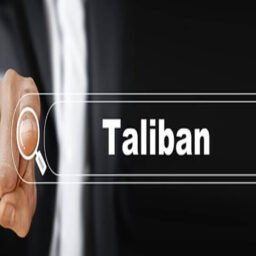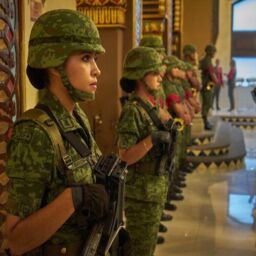INTRODUCTION
In 2018, in an incident of Shamshabad, a class 8 student was brutally thrashed by his teacher for not being attentive in class. Another incident took place where a 3rd-grade student was caned by his teacher. These are just a couple of incidents where innocent children are subjected to corporal punishments in the garb of disciplining them, even though giving corporal punishments have been declared illegal in India.[1]
Corporal punishments are punishments that are physical in nature. These punishments are permitted by the law only in case of crimes that also by an appropriate authority duly constituted following the law.
Corporal punishment in Indian schools is deeply rooted. Since time immemorial, children are made to believe that infliction of harm is a part of growing up, and they never thought that their rights are being violated. Setting apart the fact that, corporal punishments cause grievous injuries, it has also driven children to commit suicide and drop out of school. Despite being an abominable practice, corporal punishment is justified by relying on old and religious texts. These scriptures portray the teachers as gods and justify the infliction of harm on the students. Due to these factors, teachers have enjoyed a carte blanche in punishing students.
“EVEN animals are protected against cruelty… Our children surely cannot be worse off than animals,”[2] said Justice N Anand Venkatesh of the Madras High Court as he recently ruled in S. Jai Singh and Ors. v. State and Anr. in March 2021. In this case, a student died after he was made to perform a “duckwalk” for arriving late to school. Justice Venkatesh ruled that despite the legislation against such punishments, they are still practiced in various educational institutions across the nation.
Laws related to corporal punishments
Section 2(9) of the Juvenile Justice (Care and Protection of Children) Act, 2015, “best interest of the child” which means that the grounds on which a decision for a child is taken should be in the interest of the child’s basic human rights and needs, his social, mental and physical development and, not to mention that corporal punishment does not serve any of these purposes. Also, section 3(i) of the JJ Act, 2015 mentions the principle of ‘presumption of innocence’ which highlights that a child who is legally minor is considered to be innocent and incapable of having criminal intent. Section 75 of the act mentions the punishment for cruelty against a child. It says that if a person who is a guardian of a child, assaults, abandons, wilfully neglects, or does any other act which causes the child unnecessary physical or mental suffering, then he will be liable for imprisonment up to 3 years or a fine of up to 1 lakh or both. Section 82 deals with the provision of corporal punishment by stating that any person who is in charge of a educational institutions gives out corporal punishment in the façade of disciplining the children will be liable for a fine of 10,000 rupees and for every subsequent offense, that person will be subjected to imprisonment for 3 months or monetary penalty or both.. Also, such person could be dismissed from his work and barred from directly working with children.
Section 17 of the Right to Education Act, 2009, completely prohibits corporal punishment. It prohibits physical and mental harassment of children and prescribes disciplinary action against the guilty person following the applicable service rules.
Violence against children violates Right to life mentioned in Article 21 of the Indian Constitution as it violates their Right of live with dignity. Also, corporal punishments violate the right to education mentioned in Article 21A as it increases the dropout rates. In the case of Hansmukhbhai Golakdas Shah v. State of Gujarat, 2008, the Gujarat High Court ruled that the law does not recognize corporal punishment.
Sections 82 and 83 of Indian Penal Code grants exemptions from criminal liability to any actions done by minor children. Aside from this, violence against children constitutes a crime under IPC and makes a person liable for causing hurt under section 323; grievous hurt under section 325; voluntarily causing grievous hurt by dangerous means under section 326 ; using criminal force under section 352; criminal intimidation under section 506; outraging the modesty of a woman or word, gesture or act intended to insult the modesty of women under section 354 or 509; and where a child commits suicide due to humiliation, then section 305 IPC is applicable for abetment of suicide.
People often tend to justify their acts by claiming that such punishment is necessary for a child’s development as it ensures that the child grows up without showing any signs of bad behaviour. They get a ground of protection from section 88 and section 89 of IPC. Section 88 protects “Acts not intended to cause death, done by consent in good faith for person’s benefit” and Section 89 protects “Act done in good faith for benefit of child or insane person, by or by consent of guardian.”[3]
Article 19 of the UN Convention on the Rights of Child 1989 (UNCRC) mentions the right of those children to be protected from any kind of hurt and declares that giving out corporal punishments for discipline purpose is just something that cannot be accepted. Governments should make sure that children are properly cared for and protected from violence, abuse and neglect by any person who is taking care of them. Article 28(2) requires the state parties to “take all appropriate measures to ensure that school discipline is administered in a manner consistent with the child’s human dignity and in conformity with the present Convention.”[4]
NCPCR has also issued various guidelines to control the Corporal punishments in school and address the grievances of the children. One of the guidelines directs every school to constitute a ‘Corporal Punishment Monitoring Cell’ to look into the complaints of corporal punishments.
The Regressive Judicial discourse
Unfortunately, even after the legislative disapproval of corporal punishments in India, there are still some High courts that try to stick to the old orthodox rules and believe that inflicting harm on the students is necessary and teachers have the authority over the children to do so. In a case of Himachal Pradesh, a student committed suicide after being slapped by his teacher twice. The Teacher was sued for assault. The Himachal High Court discharged all the charges against the teacher and held that slapping by teacher does not constitute assault. The Kerela high Court finds corporal punishment problematic only when there are grave injuries, as indicated by their decisions. [5]
Is a Law enough?
Even though there are various legislations prohibiting corporal punishments, the use of such forms of punishments is still prevalent across the nation. A recent study done by the Agrasar NGO revealed that more than 80% of children in Gurugram face corporal punishments on a daily basis. It clearly suggests that there is a deeper issue at play here than what meets the eye. The teachers use these methods due to lack of awareness and or interest to explore options other than violence. They are often swayed by their emotional build up due to factors like low pay, skewed student teacher ratio, poorly resourced schools, etc., and lash out on students. Unless these structural factors underlying violence are addressed, legal provisions are unlikely to provide deterrence. Other steps like improving the teacher student relationships, appointing counsellors for children etc., could also be helpful in deterring the use of corporal punishments.[6]
CONCLUSION
Even now, the practice of physical punishment continues as most of the people believe in the old age notion of “spare the rod spoil the child”. The mindset of the people needs to be change. People should understand the fact that there is no proof that corporal punishments develop the children into responsible citizens. Contrary to that, the children receiving corporal punishments may even become violent as a means of retaliation or they might develop into physically abusive adults. So, it is high time that people are made aware of the laws and a zero-tolerance attitude towards corporal punishment is developed.
Author(s) Name: Swetangi Ranjan (Central University of South Bihar, Gaya)
References:
[1] ‘Three Corporal Punishment Cases in three days’ (Newindianexpress.com, 7 October 2018) <www.newindianexpress.com/states/telangana/2018/oct/07/three-corporal-punishment-cases-in-three-days-1882253.html> accessed on 19 September 2021
[2] Ishika Garg, ‘Is a Law enough to stop corporal punishment in India’ (Theleaflet.in, 7 July 2021) <www.theleaflet.in/is-a-law-enough-to-stop-corporal-punishment-in-schools/> accessed on 19 September 2021
[3] Indian Penal Code,1860 s 89
[4] The United Nations Convention on Rights of the Child (adopted 20 November 1989, entered into force on 2 September 1990) art 28
[5] Rahul Machaiah, ‘The Regressive Judicial Discourse on Corporal punishments in India’(BarandBench.com, 4 March 2021) <www.barandbench.com/columns/the-regressive-judicial-discourse-on-corporal-punishment-in-india> accessed on 19 September 2021
[6] Supra Note 2
















